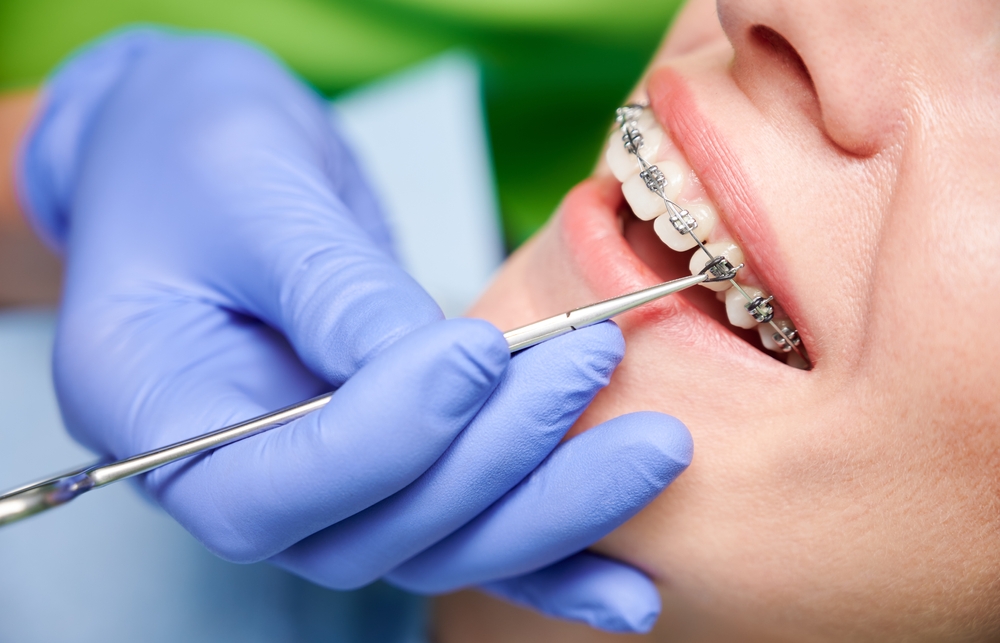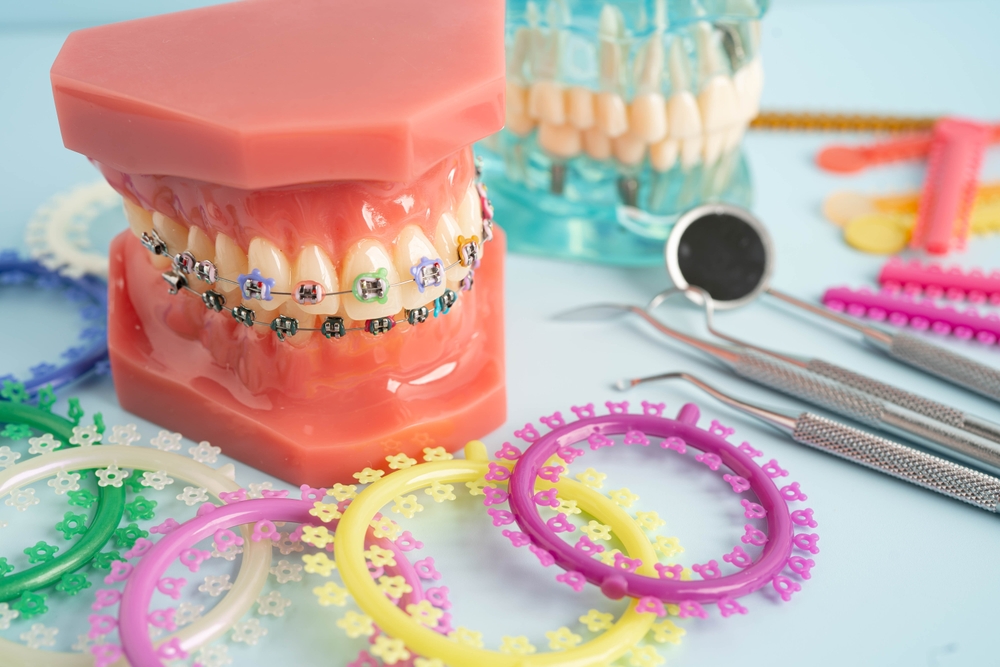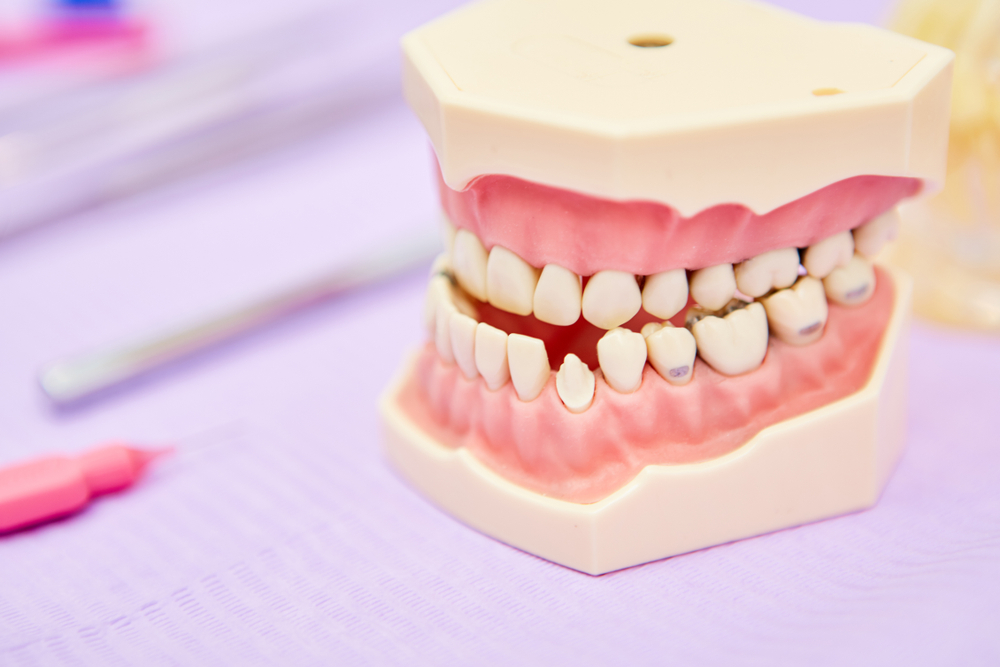At Davis Family Orthodontics, led by Dr. Laura Davis and serving the communities of Lawrenceville, Morrow, Stone Mountain, and Loganville, GA, understanding the intersection of restorative and orthodontic care is essential to achieving long-term oral health. One important consideration in comprehensive dental planning is how dental implants influence the process of orthodontic treatment. Unlike natural teeth, which can be repositioned over time with braces or aligners, dental implants are fixed in the jaw and cannot be moved once placed. This unique characteristic introduces special challenges and planning requirements when aligning a smile that includes one or more implants. Patients and providers must work closely together to develop a treatment plan that accommodates both the immobility of implants and the desired orthodontic outcomes.
Understanding the Nature of Dental Implants
Dental implants are artificial tooth roots made of titanium that are surgically placed into the jawbone to support a crown, bridge, or denture. They fuse with the bone in a process called osseointegration, making them a permanent part of the jaw’s structure. Because implants are anchored into bone and do not have a periodontal ligament—the soft tissue that allows natural teeth to move—they remain immobile under orthodontic forces. This feature makes them highly effective for restoring function and aesthetics, but also complicates any future orthodontic adjustments.
Patients with dental implants who seek orthodontic treatment often face a more complex planning process than those without implants. Whether the implant was placed before orthodontic work or is needed after tooth alignment, timing and sequence are critical. If a tooth is missing and orthodontic treatment is expected, the implant is usually delayed until the surrounding teeth have been properly aligned. Conversely, if an implant is already in place and the surrounding teeth are misaligned, the orthodontic strategy must be adapted to work around the immovable anchor.
Timing Is Critical in Treatment Planning
One of the most important orthodontic considerations for patients with dental implants is treatment timing. Ideally, orthodontic movement should precede the placement of implants. This allows the orthodontist to create optimal spacing and alignment for future implant placement. Once orthodontic treatment is complete and the desired tooth positions are achieved, the implant can be placed in its final, correctly aligned location. This sequencing helps to ensure both functional bite alignment and ideal aesthetics.
In situations where an implant has already been placed and orthodontic correction is later desired, treatment becomes more challenging. The orthodontist must design a plan that either moves the surrounding teeth without altering the implant’s position or incorporates the implant as a fixed anchor point. In some cases, if the implant is poorly positioned or if orthodontic needs are significant, removal and later replacement of the implant may be considered. However, this is a more invasive option and not always preferred, making early coordination between orthodontist and restorative dentist critical.
Using Dental Implants as Anchorage Points
Although implants cannot move, their immobility can be turned into a strategic advantage in certain orthodontic cases. Implants can serve as anchor points—stable structures against which other teeth can be moved. In traditional orthodontics, anchorage control is a major concern; excessive or unintended movement of neighboring teeth can compromise the outcome. Dental implants offer a fixed anchor that can improve the precision of tooth movement, particularly when complex shifts or rotations are needed.
For example, in patients with partial edentulism (missing several teeth), implants placed before or during orthodontic treatment may act as anchorage units to help retract, advance, or rotate adjacent teeth without the need for temporary anchorage devices (TADs) or external appliances. However, such treatment plans must be approached with careful biomechanical consideration. The forces applied must be controlled to avoid transmitting unnecessary pressure to the implant, which could affect surrounding bone health or restorations.
Managing Aesthetics and Function During Orthodontics
In addition to structural planning, orthodontic treatment in patients with implants must address both function and aesthetics. Misaligned natural teeth adjacent to an implant can compromise the final appearance of the smile, even if the implant crown itself looks natural. Similarly, uneven spacing or bite misalignment may place undue stress on the implant, potentially reducing its longevity or comfort. In such cases, orthodontic treatment becomes not only a cosmetic procedure but a preventive and protective one.
Patients often seek orthodontic treatment after receiving implants because of shifting teeth, bite discomfort, or dissatisfaction with their smile’s appearance. Orthodontists must then assess the position of the implant and determine how to harmonize the rest of the dentition around it. This may involve using clear aligners, braces, or sectional appliances in isolated areas while maintaining the position of the implant-supported crown. Communication with the general dentist or implant specialist is key, as final restorations may need to be adjusted after orthodontic realignment.
Post-Orthodontic Implant Placement: Best Practices
For patients who anticipate the need for dental implants in the future, completing orthodontic treatment first is typically the most effective approach. Once the teeth are properly aligned and adequate space has been created, implants can be placed in ideal positions. This ensures optimal occlusion (how the teeth meet when biting) and reduces the risk of implant failure due to malocclusion or improper spacing. In many cases, orthodontists will use space-maintaining appliances during treatment to preserve the location where a future implant will be placed.
It’s also essential to evaluate bone health and gum tissue integrity following orthodontic treatment. Proper implant placement depends on sufficient bone density and volume, as well as healthy soft tissue to support the crown. If bone loss or gum recession has occurred, grafting procedures may be necessary before implant placement. Patients should be prepared for a multi-phase approach, where orthodontics paves the way for successful implant integration.
Special Considerations for Adult Orthodontic Patients
Many patients with dental implants fall into the category of adult orthodontics, a growing segment in modern dental care. Adults may have more complex dental histories, including previous extractions, prosthetics, or restorations. These factors require tailored treatment plans that consider the long-term stability of both natural and artificial components of the mouth. Older patients may also have slower bone remodeling rates, affecting the pace of orthodontic movement.
Psychological factors also come into play. Patients who have invested time and money into implant restoration may be hesitant to undertake orthodontic treatment, particularly if it could jeopardize their current results. It is important for providers to clearly explain the risks, benefits, and realistic outcomes of combining these treatments. In many cases, the end result—a fully functional and esthetically pleasing smile—is worth the effort and coordination.
Conclusion: A Collaborative Approach Yields the Best Results
Orthodontic treatment involving dental implants requires strategic planning, interdisciplinary communication, and careful execution. Because implants cannot be moved once placed, they must be considered permanent fixtures in the orthodontic landscape. Whether used as anchor points or planned for post-treatment placement, implants affect how and when teeth can be repositioned. A thoughtful approach that integrates orthodontic goals with restorative needs ensures long-term function, comfort, and appearance.
At Davis Family Orthodontics, with offices in Lawrenceville, Morrow, Stone Mountain, and Loganville, GA, understanding how dental implants factor into orthodontic care is an essential part of delivering comprehensive and informed treatment planning. Patients who consider these factors early in their treatment journey are best positioned to achieve healthy, stable, and beautiful results.
Sources
El-Beialy, W., Mostafa, Y. A., & El-Mangoury, N. H. (2009). Orthodontic considerations for patients with dental implants. World Journal of Orthodontics.
Miyawaki, S., Koyama, I., Inoue, M., Mishima, K., Sugahara, T., & Takano-Yamamoto, T. (2003). Factors associated with the stability of titanium screws used as orthodontic anchorage. American Journal of Orthodontics and Dentofacial Orthopedics.
Jang, I., Tanaka, M., & Kwon, Y. D. (2012). Orthodontic treatment in patients with dental implants. Journal of the Korean Association of Oral and Maxillofacial Surgeons.









